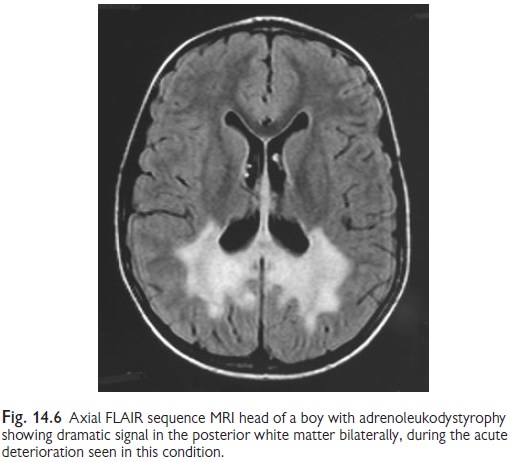Chapter: Paediatrics: Neurology
Paediatrics: Degenerative disorders
Degenerative disorders
There are many disorders that can
present with developmental regression,
that is, ‘loss of skills’ and/or neurological deterioration, i.e. developing
new neurological signs, or progressive intellectual deterioration. These signs
always require intensive investigation.
History
· Full
developmental history: try
and exclude autism.
· Family
and social history: with
particular emphasis on consanguinity.
· Medical
history: check for other
organ involvement—eyes, hearing, cardiac,
endocrine, respiratory, viscerae.
Examination
· All
systems: storage disorders
often involve other systems besides the brain,
particularly face and viscera.
· Neurological
examination: this
must be thorough. Look particularly for evidence
of ataxia, myoclonus, dementia, dystonia, and pyramidal signs.
Investigations
History should guide a rational
ap-proach to investigation, e.g. a family history of a similar disorder in a
girl would make x linked disorders much less likely.
· MRI:
this form of imaging will give the
largest yield. Look particularly at
the white matter for leucodystrophies and see if there are any structural
abnormalities (Fig. 14.6).

Other
laboratory investigations: these
are outlined in the Box 14.2.
Box 14.2 Investigations for developmental regression
Blood biochemistry
·U&E:
renal failure
·Liver
function tests: liver
disease
·Plasma
glucose and matching CSF glucose: glucose carrier transport (GLUT1)
deficiency
·Plasma
lactate and matching CSF lactate: mitochondrial cytopathy
·Ammonia:
urea cycle defects
·Thyroid
function tests: thyroid
disease
·Urate:
Lesch–Nyhan disease and purine
disorders
·Plasma
amino acids: aminoacidopathies
·Very
long chain fatty acids: peroxisomal
disorders
·Copper
level: Menkes disease
·Caeruloplasmin:
Wilson disease
Special blood investigations
·Vacuolated
lymphocytes: Batten’s
disease and other storage disorders
·WBC
enzymes including Batten’s enzymes: lysosomal storage disorders
and Batten’s disease
Urine
·Amino
and organic acids: organic
acidurias, MTHFR deficiency, sulphite
oxidase deficiency
·Urate,
creatinine, purine, and pyrimidine over 24hr: Lesch–Nyhan, purine/nucleotide phosphorylase deficiency
·Hydroxybutyric
acid: succinate
semialdehyde dehydrogenase deficiency
·Mucopolysaccharides:
mucopolysaccharidoses
Tissue biopsies
·Liver:
Alper’s disease
·Skin
(choelesterol esterification): Niemann–Pick type C
·Muscle:
mitochondrial disease
·Rectal:
Batten’s disease
Eyes
Ophthalmology
review: retinitis
pigmentosa and other ophthalmological markers
of neurological disorders e.g. cherry red spots
Electrophysiology
·Visual
evoked responses: Batten’s
disease
EEG:
status epilepticus and regular
spike wave discharges (e.g. progressive
myoclonic epilepsies, such as lafora body, gangliosidoses)
Related Topics